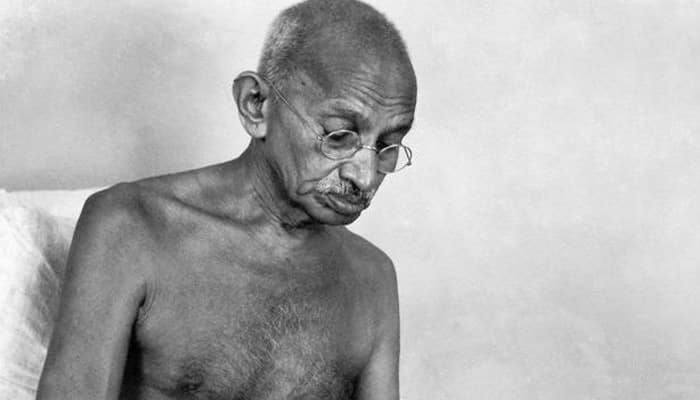Delhi: As we celebrate Independence Day once again and pay tributes to great leaders who gave us freedom from the British, the name of Mahatma Gandhi will eternally be on the top.
The man who changed the course of the future of India with his ideas of non-violence and religious peace who extraordinary in more ways than one.
Let us encapsulate the journey of the Mahatma for you.
Early life:

Gandhi was born on 2 October 1869 in a Baniya family in Porbandar (also known as Sudamapuri). He studied law and jurisprudence in London but as life would have it, Gandhi at the age of 24 arrived in South Africa in 1893 to work as a legal representative for the Muslim Indian Traders based in the city of Pretoria. He spent 21 years in South Africa.
Activism in South Africa:

In South Africa, Gandhi witnessed discrimination directed at all 'coloured' people. The famous episode where he was thrown off a train at Pietermaritzburg after refusing to move from the first-class was a life-turning event for him. It shaped his social activism and awakened him to social injustice.
Return to India:

Gandhi returned to India in 1915 and joined the Indian National Congress. Gandhi took leadership of the Congress in 1920 and his insistence led to the INC declaring independence on 26 January 1930. Obviously the British did not recognise the declaration but after negotiations, the Congress took up a role in provincial government in the late 1930s.
However, Gandhi and the Congress withdrew their support of the Raj when the Viceroy declared war on Germany in September 1939 without consultation. Tensions brewed till Gandhi demanded immediate independence in 1942 and the British responded by imprisoning him and thousands of Congress leaders.
Champaran agitation:

Gandhi's first big move was the Champaran and Kheda agitations of Bihar and Gujarat in 1918. The Champaran agitation pitted the local peasantry against British landlords. The farmers were forced to grow Indigo, a cash crop, and were forced to sell their crops to the planters at a fixed price. On the other hand, in 1918,when Kheda was hit by floods and famine, Gandhi moved his headquarters to Nadiad and initiated a signature campaign where peasants pledged non-payment of revenue even under the threat of confiscation of land. For five months, the administration refused but finally in end-May 1918, the government relaxed the conditions of payment of revenue tax until the famine ended.
Non-Cooperation movement:

Gandhi in his famous book Hind Swaraj (1909) Gandhi declared that British rule was established in India with the co-operation of Indians and pointed out that if Indians refused to co-operate, British rule would collapse. After the Jallianwala Bagh massacre and subsequent violence, Gandhi began to focus on winning complete self-government and control of all Indian government institutions. In December 1921, under his leadership, the Congress was re-organised with a new constitution, with the goal of Swaraj. Gandhi expanded his nonviolence platform to include the swadeshi policy - the boycott of foreign-made goods, especially British goods.
Road to Independence:

Gandhi pushed through a resolution at the Calcutta Congress in December 1928 calling on the British government to grant India dominion status or face a new campaign of non-co-operation with complete independence for the country as its goal. On 31 December 1929, the flag of India was unfurled in Lahore. 26 January 1930 was celebrated as India's Independence Day by the Indian National Congress meeting in Lahore. Gandhi then launched a new Satyagraha against the tax on salt in March 1930 and undertook the famous Salt March to Dandi from 12 March to 6 April, where he marched 388 kilometresfrom Ahmedabad to Dandi, Gujarat to make salt himself. This campaign was one of his most successful at upsetting British hold on India. Ultimately the sacrifices of Gandhi led to the independence of India and freedom from the oppressive British rule.
Gandhi assassinated:

Sadly Gandhi did not live long in a free India. He used to stay in Delhi at Birla House after independence and daily at 5.30 pm he used to go for the evening prayer. On 30th January 1948, while he was on his way to the prayer ground he was assassinated by Nathuram Godse.
(Pic Courtesy - wikipedia.org, www.miscw.com, www.youthconnect.in)
















